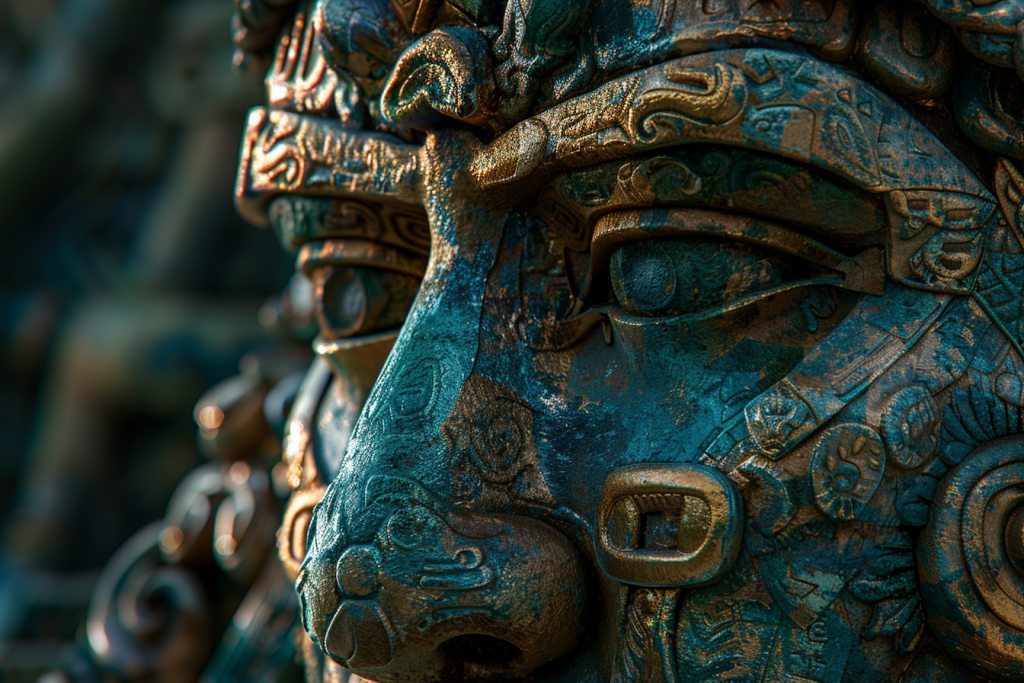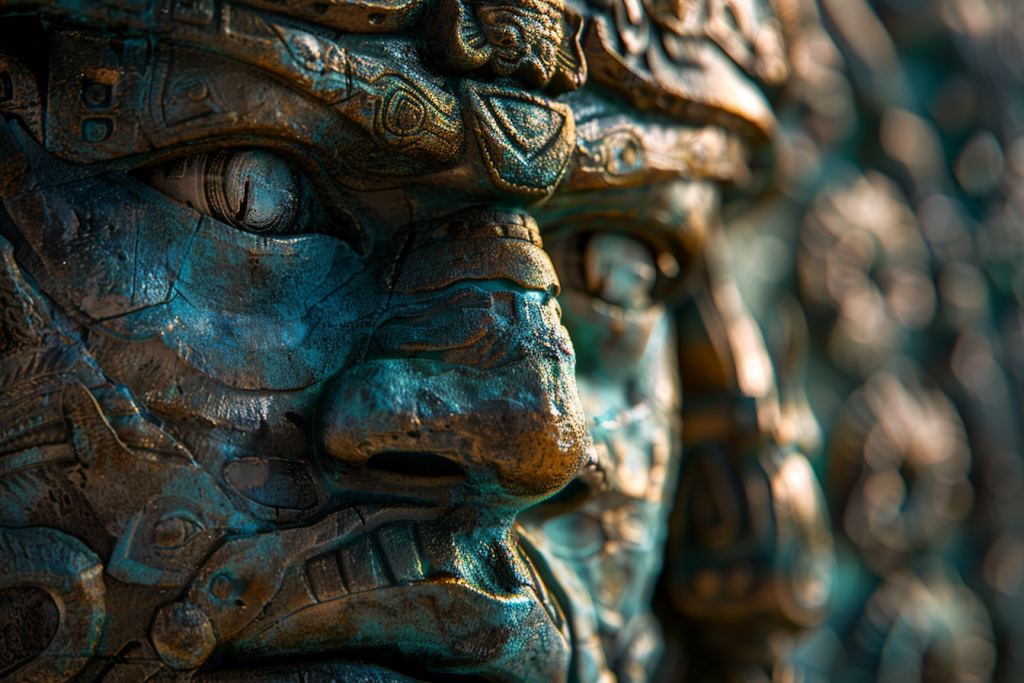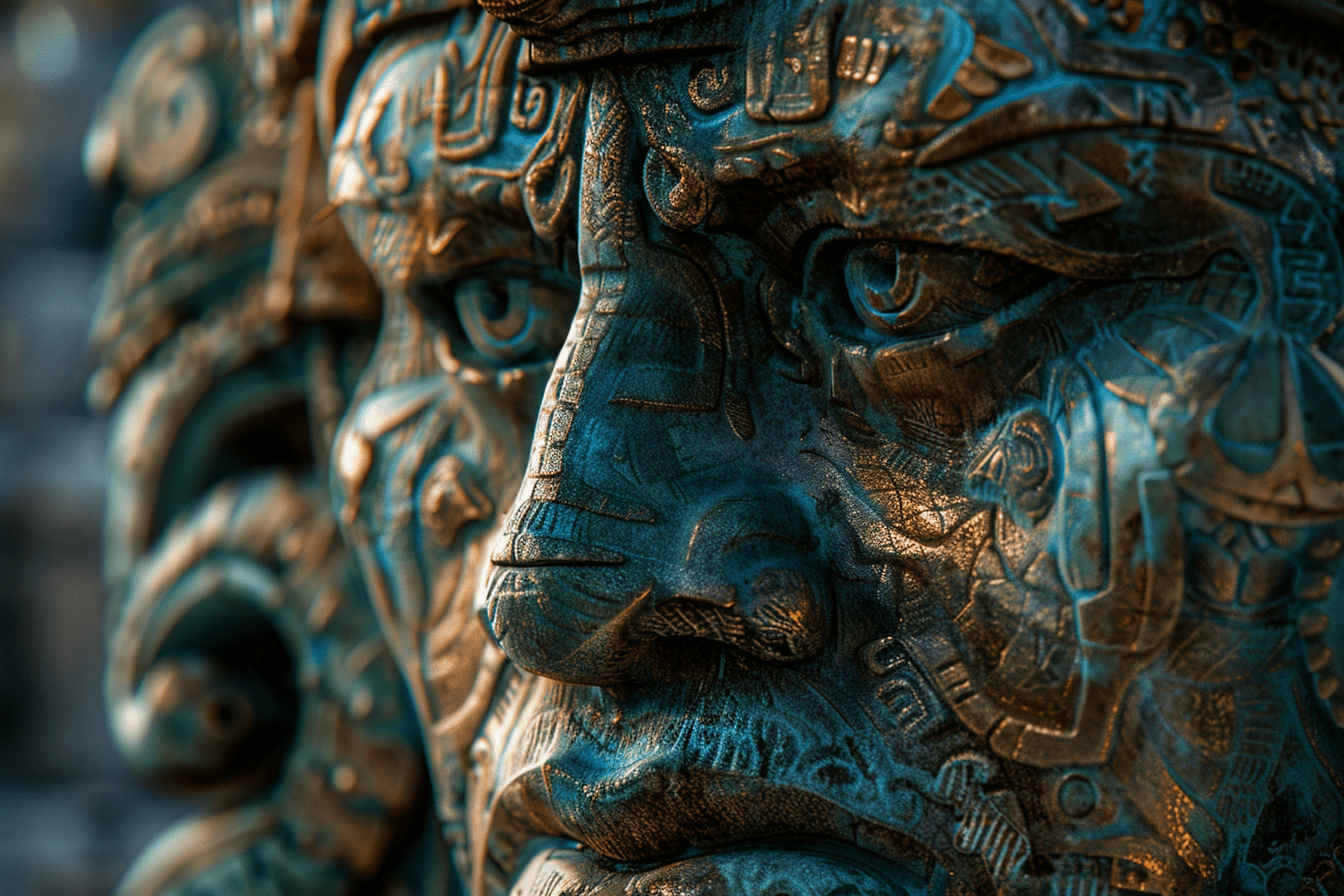Mythology and Origins
The Story of Kukulkan
Kukulkan, often depicted as a feathered serpent, is a central figure in Maya mythology. This deity bridges the gap between the heavens and the Earth, embodying the essential elements of wind and water. The mythology surrounding Kukulkan is rich with tales of creation, guidance, and endowment of knowledge to the Maya people, illustrating the god’s integral role in the formation of the world and the sustenance of life.
Get your dose of History via Email
Origins in the Maya Civilization
The worship of Kukulkan has its roots deep within the Maya civilization, a culture renowned for its advancements in mathematics, astronomy, and writing. The deity’s origins are often traced back to earlier representations of serpent gods in the Preclassic Maya period, evolving over centuries into the figure known today. Kukulkan’s presence is felt across various aspects of Maya life, from their architectural achievements to their complex calendrical systems.

Connections to Other Mesoamerican Deities
Kukulkan is not an isolated figure within Mesoamerican mythology but is linked to similar deities across the region. Notably, Kukulkan is often associated with Quetzalcoatl of the Aztec tradition, a deity that shares many attributes with Kukulkan, including the feathered serpent aspect. These connections highlight the shared cultural and religious threads among the Mesoamerican civilizations, despite their diverse expressions of belief and worship.
Iconography and Symbols
Depictions of Kukulkan in Maya Art
Kukulkan is prominently featured in Maya art, with depictions ranging from carvings on temple walls to illustrations in codices. These representations often emphasize the deity’s serpentine form, adorned with feathers, symbolizing its connection to both the earth and the sky. The Temple of Kukulkan at Chichen Itza, with its serpentine shadows during equinoxes, stands as a testament to the architectural embodiment of Kukulkan’s image.
Symbols Associated with Kukulkan
The iconography of Kukulkan is rich with symbols, including the feathered serpent, jade, and the quetzal bird. These symbols are not merely decorative but carry deep meanings related to life, fertility, and the divine. The feathered serpent motif, in particular, symbolizes the unity of terrestrial and celestial realms, a core concept in Maya cosmology.

Interpretations of Kukulkan’s Iconography
Interpretations of Kukulkan’s iconography often focus on the deity’s role as a mediator between the gods and humans, as well as between the physical and spiritual worlds. The imagery associated with Kukulkan serves as a visual narrative of creation, sustenance, and renewal, reflecting the cyclical nature of life and the universe in Maya belief.
Cultural and Religious Significance
Kukulkan’s Role in Maya Religion
In Maya religion, Kukulkan occupies a central position as a creator god and a bringer of civilization. The deity’s influence extends to various aspects of life, including agriculture, weather, and the cycles of time. Kukulkan’s teachings, as recounted in Maya mythology, are foundational to the moral and social structures of Maya society.
Festivals and Ceremonies Dedicated to Kukulkan
Festivals and ceremonies dedicated to Kukulkan were integral to Maya religious practice, serving as occasions for communal gathering, prayer, and sacrifice. These events were not only expressions of devotion but also means of ensuring the deity’s favor and the continued prosperity of the community. The rituals performed in honor of Kukulkan underscored the deity’s significance in maintaining the balance of the natural and supernatural worlds.
The Significance of Kukulkan in Contemporary Maya Culture
Kukulkan continues to hold significance in contemporary Maya culture, embodying the enduring connection between the ancient Maya and their descendants. The deity’s legacy is evident in modern ceremonies, cultural practices, and the preservation of Maya heritage. For the Maya people today, Kukulkan remains a symbol of identity, resilience, and the timeless relevance of their ancestral beliefs.

